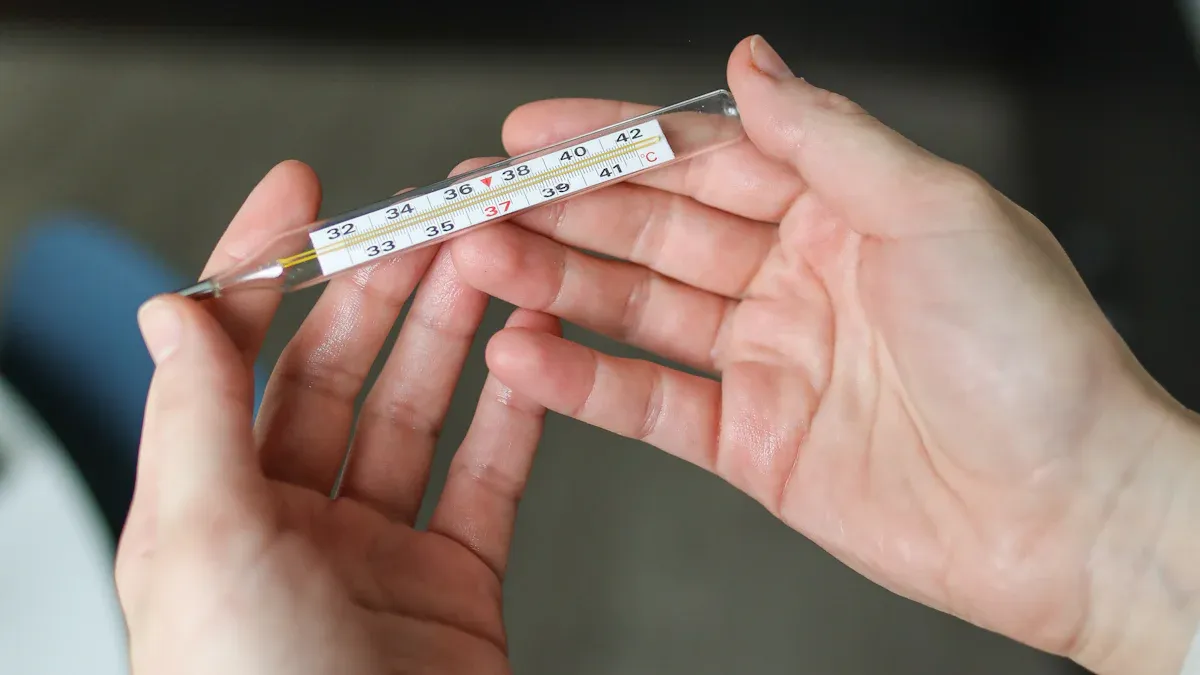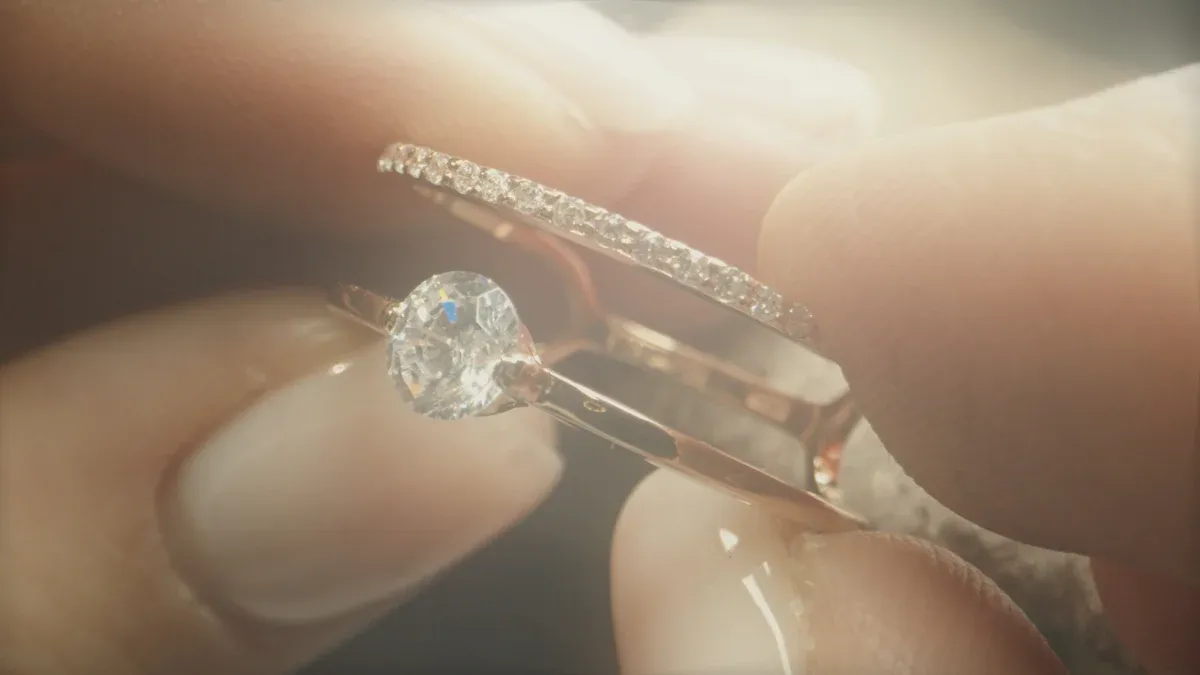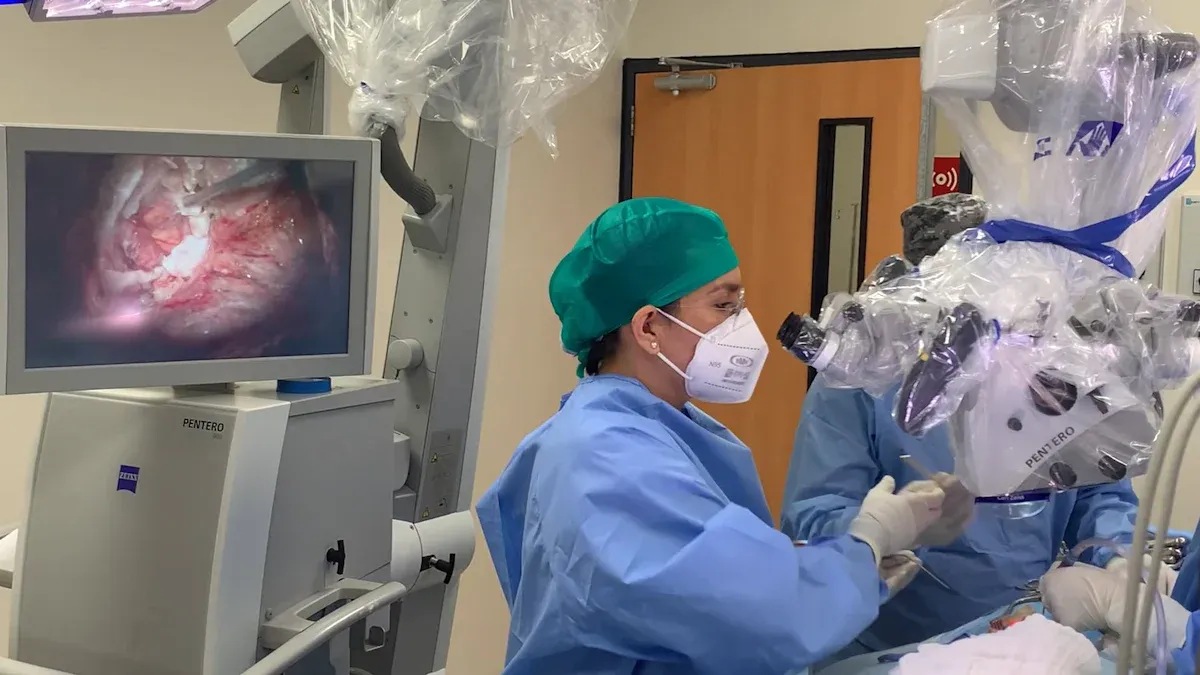Unlocking the Secrets of Nitinol Stent Performance

Nitinol Stent for Stent Delivery Systems is revolutionizing the treatment of blood vessel problems. These stents are specifically designed to function seamlessly within the body. Nitinol's unique ability to remember its shape and return to it, combined with its exceptional flexibility under pressure, makes it ideal for medical applications. Precision manufacturing ensures that Nitinol Stent for Stent Delivery Systems remains strong and reliable, with heart valve tests demonstrating durability lasting up to 600 million cycles. As the prevalence of blood vessel diseases continues to rise, Nitinol Stent for Stent Delivery Systems plays a crucial role in enhancing patient care.
Key Takeaways
Nitinol stents are special because they keep their shape. This helps them fit well in blood vessels and give strong support.
These stents are very flexible. They can bend and stretch without breaking, which helps them move through blood vessels easily.
Nitinol stents do not rust and are safe for the body. They work well for a long time and lower the chance of bad reactions.
Using Nitinol stents can help patients heal better. They last a long time and can work through many cycles without breaking.
Custom-made Nitinol stents fit better and work better. They improve blood flow and cause fewer problems for patients.
Material Properties of Nitinol

Shape Memory and Superelasticity
Nitinol is a special alloy that can "remember" its shape. If you bend a Nitinol stent, it goes back to its original shape when warmed by the body. This helps the stent fit perfectly in the artery, giving strong support. Nitinol is also superelastic, meaning it can stretch and bend without breaking. It changes between two forms, called austenite and martensite, letting it handle up to 6% strain without staying bent. This makes it perfect for moving through blood vessels.
Did you know? Nitinol's superelasticity helps stents stay strong and flexible, even during tough procedures.
Tests show how well these features work. For example, Nitinol can recover its shape under less stress, making it easier to use in stents. These qualities make Nitinol very important for medical tools that need to be precise and flexible.
Evidence Description | Key Findings |
|---|---|
Superelasticity in Nitinol | Handles up to 6% strain without staying bent. |
Stress-Induced Martensite Transformation | Helps stents adjust in changing environments, improving performance. |
Corrosion Resistance and Biocompatibility
Medical implants must resist rust and work well with the body. Nitinol does both, making it great for stents. Its surface creates a protective layer that stops rust, even in the body’s tough conditions. This keeps the stent strong over time. Nitinol is also safe for the body, reducing bad reactions and fitting well with tissues.
Studies show Nitinol is better than other materials. While some metals rust or cause swelling, Nitinol stays safe and steady. This makes it a top choice for long-term medical use.
Property | Nitinol | Alternative Alloys |
|---|---|---|
Excellent | Moderate to Poor | |
Biocompatibility | High | Varies |
Long-Term Results | Better | Varies |
Tip: Picking Nitinol stents means better results because they resist rust and are safe for the body.
Fatigue Resistance for Long-Term Durability
Stents need to last a long time and handle constant stress. Nitinol stents are great at this. Tests show they can handle over 10 million cycles without breaking. This means they stay strong for years, even in tough conditions.
Heat tests prove Nitinol keeps its shape in extreme temperatures. Tests in body-like liquids also show it resists rust, making it last longer.
Benefits of Nitinol stents:
Handle strain limits of 0.4–0.8% in real conditions.
Stay strong after long exposure to body environments.
Last longer than stents made from other materials.
Nitinol’s mix of superelasticity, shape memory, and durability makes it the best choice for heart stents.
Key Design Features of Nitinol Stents

Radial Strength and Flexibility
Nitinol stents are built to be strong and flexible. Their radial strength helps them resist pressure and keep their shape. Flexibility allows them to move with the body naturally. Together, these features keep blood vessels open and working well.
Tests and computer models show how effective these stents are. For example, bending tests matched predictions from computer models. This proves nitinol stents can handle the stress inside the body.
Clinical studies also show nitinol stents perform better than others. The SUPERA stent had 360% more radial strength than laser-cut stents. It also lasted through 10 million cycles, equal to 10 years of use. These results show nitinol stents are durable and reliable for long-term use.
Tip: Choose stents with tested strength and flexibility for better results.
Vessel Conformability and Scaffolding
Nitinol stents are great at fitting into blood vessels. They adjust to the shape and movement of the vessel. Scaffolding means they support the vessel and keep it open without collapsing.
Nitinol’s superelasticity helps it bend and stretch without breaking. This lets the stent fit the vessel’s curves. It also reduces harm to nearby tissues, helping the body heal faster.
Market data shows how important these features are. For example, Cook Medical’s Zilver PTX stent was designed to last longer. By 2023, it held 22% of the stent market. This shows the value of stents with good conformability and scaffolding.
Did you know? Nitinol stents adjust to blood vessels, even in tough cases.
Biocompatibility and Surface Treatments
Nitinol stents work well with the body because they are biocompatible. Special surface treatments improve this by adding protective layers or coatings. These reduce bad reactions and make the stents work better.
Research shows treatments like electropolishing lower the risk of blood clots. Drug-eluting stents, which release medicine, reduce swelling and help healing. A titanium dioxide layer also stops rust, keeping the stent strong over time.
New coatings mimic the body’s natural environment. For example, biocomposite coatings use cells or proteins to improve adaptability. These advancements make nitinol stents safer and more effective for medical use.
Note: Surface treatments improve safety, flexibility, and strength in nitinol stents.
Nitinol Stent Manufacturing Processes
Laser Cutting and Heat Treatment
Making nitinol stents needs great accuracy. Laser cutting helps shape stents with detailed designs. This method uses advanced tools to make exact cuts, keeping the stents strong. After cutting, heat treatment improves the stent's strength and shape. It also adds a protective layer to stop bending or damage.
Tests show heat treatment settings, like temperature and time, affect stent quality. For instance, heating at 450–600°C for 10–30 minutes in a vacuum works best. Lower temperatures, like 400°C, can weaken the stent, showing why careful control is important.
Parameter | Effect on Machining Complexity |
|---|---|
Pulse-on time (Ton) | Changes how fast material is removed |
Pulse-off time (Toff) | Affects how smooth the surface becomes |
Al2O3 nanopowder | Improves cutting and reduces tool wear |
Cutting speeds | Impacts how easy it is to cut |
Feed rates | Changes removal speed and surface finish |
Tool nose radii | Affects tool wear and surface quality |
These steps in laser cutting and heat treatment help make nitinol stents strong and reliable.
Shape Setting and Superelasticity Treatment
Shape setting is key to making nitinol stents. This step heats nitinol at 400–500°C to fix its shape. Once shaped, the stents keep their form even when bent or squeezed. After this, superelasticity treatment sets the stent's flexibility and working temperatures.
Thermomechanical processing mixes cold shaping and heat treatment to improve the material. This helps stents handle the constant movement inside blood vessels. By fine-tuning these methods, stents become flexible and strong enough to fit vessels perfectly.
Process | Description |
|---|---|
Thermomechanical Processing | Combines cold shaping and heat to improve material properties. |
Shape Setting | Heats nitinol at 400–500°C to create specific shapes. |
Superelasticity Treatment | Sets flexibility and working temperatures after shaping. |
These processes are crucial for making stents that work well in the body.
AccuPath’s Role in Nitinol Tubing for Stents
AccuPath is a top company for nitinol tubing used in stents. They make high-quality tubing that meets strict medical standards. Using advanced methods, AccuPath ensures their tubing is precise, strong, and safe for the body.
AccuPath focuses on innovation to meet stent makers' needs. They use cutting-edge laser cutting and heat treatment to create tubing with excellent properties. Their attention to detail ensures their tubing works well in modern medical tools.
Choosing AccuPath means getting tubing that improves stent performance and patient care. Their skill in nitinol stent production makes them a trusted leader in medical technology.
Challenges and Innovations in Nitinol Stent Design
Addressing Fatigue and Fracture Risks
Nitinol stents face stress inside the body every day. This stress can cause fatigue and fractures over time. Stents must survive millions of cycles without breaking. Nitinol is very strong and durable. Studies show nitinol stents last through 420 million cycles in 10 years. This strength lowers fracture risks and makes them reliable for long-term use.
Stiffness also affects how well stents work. Bending stiffness ranges from 2 N/m to 98 N/m. Axial tensile stiffness is between 32 N/m and 12,387 N/m. These numbers show nitinol stents adapt to different conditions. In the femoropopliteal artery, stents keep blood flowing well. Patency rates range from 43% to 90% after 12 months.
Tip: Pick stents with proven strength and flexibility to avoid fractures.
Innovations in Drug-Eluting and Coated Stents
Drug-eluting and coated stents are big improvements in stent technology. These stents release medicine to stop blood vessels from narrowing again. In 2002, a study showed sirolimus-eluting stents worked better than bare stents. The SIROCCO trial found drug-eluting stents had a 22.6% restenosis rate. Bare stents had a higher rate of 30.9% after six months.
The market for drug-eluting stents is growing fast. This is due to more heart disease cases and less invasive treatments. North America leads this market because of advanced healthcare and research. These stents improve safety and make treatments more effective.
Did you know? Drug-eluting stents keep vessels open and lower risks like swelling or clots.
Advances in Customization and Patient-Specific Designs
Custom stents are changing medical care. Designing nitinol stents for each patient improves their fit and function. Research shows custom stents work better in curved blood vessels. These designs give better support and reduce problems.
New ideas, like stents with special Poisson ratios, solve unique challenges. For example, some stents are made for curved vessels or specific lesions. These designs improve blood flow and fit better than regular stents.
Note: Custom stents are improving care. They fit better and cause fewer problems.
Nitinol stents have changed how doctors treat blood vessel problems. They can remember their shape and stretch without breaking. This helps them fit perfectly and last a long time. Special methods like laser cutting and heat treatment make them strong and reliable. These features make nitinol stents a great choice for medical use.
Studies show nitinol stents work very well. For example, the SAKE Study found no stents narrowed again. The Leipzig Supera Registry showed 94.6% of stents stayed open at six months. After twelve months, 87.7% of stents were still working. These results prove nitinol stents help patients and lower risks.
Study Name | Outcome | Patency Rate (6 months) | Patency Rate (12 months) | Notes |
|---|---|---|---|---|
SAKE Study | Supera Interwoven Nitinol Stent | High rate of patency | Not specified | No stent restenosis observed |
Leipzig Supera Registry | Popliteal artery stenting | 94.6% | 87.7% | 4 in-stent occlusions, 6 in-stent restenosis |
New designs for nitinol stents keep getting better. They are safer, easier to use, and improve patient health. These stents bring hope for healthier blood vessels and better lives.
FAQ
What makes Nitinol stents special compared to others?
Nitinol stents are unique because they remember their shape. They can bend and return to their original form. This helps them move with the body and stay strong. They also don’t rust, making them last longer in blood vessels.
How do Nitinol stents help patients heal better?
Nitinol stents fit well in blood vessels, causing less harm. Their flexibility and body-friendly material help tissues heal faster. Some stents release medicine to stop vessels from narrowing again. This lowers risks and improves recovery.
Are Nitinol stents safe for long-term use?
Yes, Nitinol stents are very strong and last a long time. They are tested to handle millions of movements inside the body. They don’t rust and are safe for the body, making them good for long-term use.
How are Nitinol stents made?
Nitinol stents are made using careful cutting and heating methods. These steps make them strong and flexible. Special surface treatments, like polishing, make them safer and work better in the body.
Can Nitinol stents be made for specific patients?
Yes, new designs allow stents to be made for each person. Custom stents fit curved or unusual blood vessels better. This improves blood flow and lowers the chance of problems. They make treatments more personal and effective.
See Also
Understanding Nitinol's Unique Properties: Shape Memory and Elasticity
Nitinol Tubing's Impact on the Future of Medical Innovations
Nitinol Tubing: Transforming Applications in Healthcare Equipment
Nitinol Tubing: A Game Changer for Medical Device Design
Comprehensive Overview of Nitinol Parts and Production Methods

